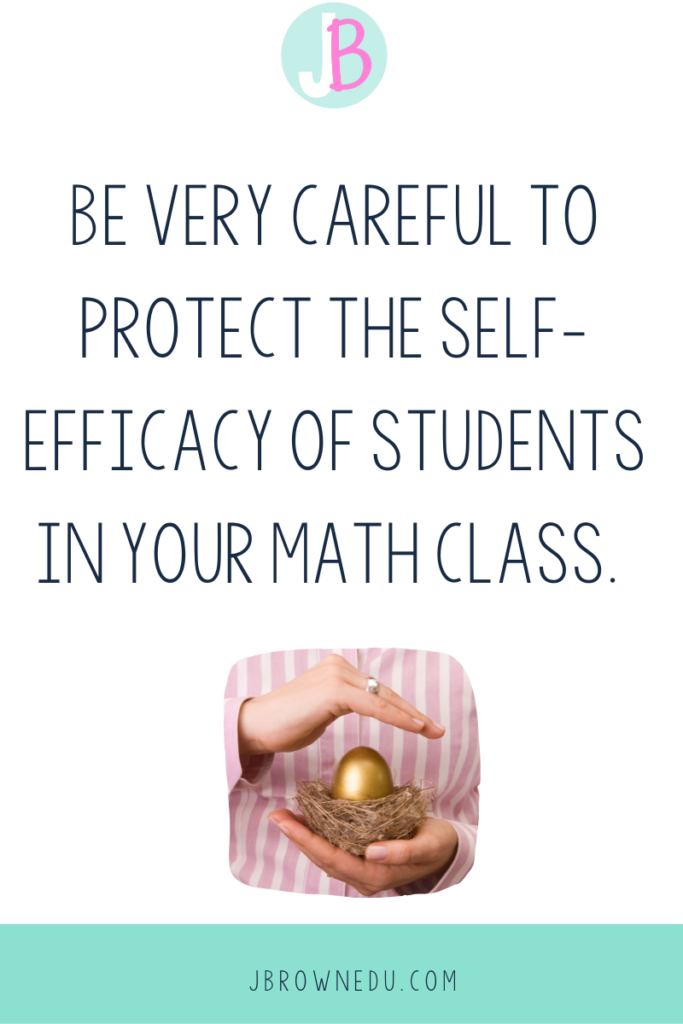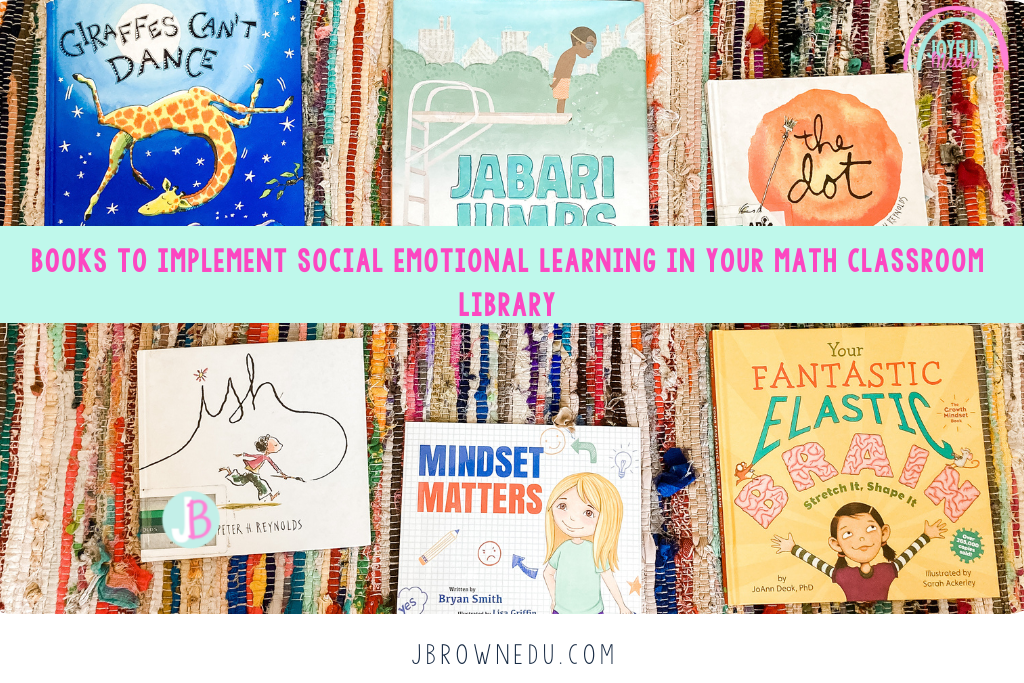Have you ever wanted to run from a challenge? For me, it was learning how to teach a group of students that I didn’t feel equipped to teach. Because I didn’t run from this particular challenge, I discovered the key to it. The key to this challenge was in learning how to build math self efficacy. This education journey will give you several moments that you want to run from. But I’m so grateful for the moments that made me want to flee. I was able to persevere, overcome the obstacles, and learn beautiful lessons. Because I stuck with the class that I thought I wasn’t equipped to face, I’m now on this journey to help others have hope in math. To read more about what math self efficacy is, you can check out this blog.

I was planning a family math night for my school and I didn’t want students to just come and play math games. You see, what happens when something that is meant to be fun, turns into a bad experience because you have barriers that prevent you from having fun. What I’m saying is that it’s great to plan fun math activities for students, but what do we do for students that can’t play the game because they haven’t yet mastered the skill that the activity involves. I’m very careful to protect self-efficacy in students.

To remedy this, I wanted to offer students something that would help them with their mindset. I didn’t want students to feel like they couldn’t be a part of or feel afraid to come to the event because they aren’t confident in their math abilities. The goal was to create a low-risk option that would encourage students and equip them when they walked away. I wanted another opportunity to build student self-efficacy in math. This led to the discovery of these picture books that I felt would be great to have in a classroom library.
Books to Implement Social Emotional Learning in Math Classroom Library

Mindset Matters by Bryan Smith
This is my absolute favorite book. A girl and her dad are building a swing set and she wants to give up. He encourages her to have a “Gonna Get It Done” mindset. Then, later in the week, she has the same challenge in math class and is reminded of her mindset. A change in her mindset led her to success in math. This is a must-have for your math classroom library. You can check it out here!
Giraffes Can’t Dance by Giles Andreae
This is an oldie but goodie. Honestly, even though this one has been around for a while, I hadn’t read it until recently. I was pleasantly surprised by the message. This book reiterates the mindset that students need to understand that they are on their own math journey. It doesn’t matter if they don’t perform like other students in the class, they must find their own path and stay focused on the goals that are before them. If you don’t have this one in your classroom yet, you should. I’ve linked it for you here.
This book is so popular. I kept seeing it on social media posts. In my quest for books, I knew that this one had to be one that I checked out. My son related with this one so much. He recently decided to not continue with his swimming lessons because it made him feel uncomfortable and afraid. I didn’t force him to continue. Honestly, after reading this book, he was motivated to give swimming lessons another try. If it had the power to motivate my son to try again, how much would it motivate other students to not give up in math when they are facing something that makes them feel uncomfortable in math. You can grab this one for your math class library here.
The Dot by Peter H. Reynolds and Ish by Peter H. Reynolds
The next two books easily became my faves as well. They are by the same author and have similar storylines. “The Dot” was another one that I kept seeing on social media that I knew I needed to check out. One of my favorite parts of it is when the teacher tells the student to put her name on something that she didn’t think was good enough. The teacher then proceeds to frame it. But my favorite line from this book is when the teacher says, “Just make your mark and see where it takes you.” Several times students are so paralyzed with fear that they sit in silence and are extremely hesitant to begin their work. They are afraid of failure. What if we continuously encourage students to make their mark and see where it takes them. You can grab them both here.
Your Fantastic Elastic Brain by JoAnn Deak, PhD
This book is such a great informational text that supports having a growth mindset. Students can read about how their brains actually can grow. It’s one thing to tell students the importance of having a growth mindset, but this book allows them to see exactly what that means for their brains and how it impacts them for not just a moment, but for the rest of their lives. You can view it here.
How does SEL in Math help students?
Our ultimate goal is for students to have strong math identities. I’ve been able to do this by embedding SEL in math. Dr. Jessica Hoffman says, “Social Emotional Learning does not compete with teaching minutes, it’s a way of being.” By embedding these practices in the everyday flow of our classes, we show students how to “be” whether it’s math class or science class. We also have to find ways to help students build their math self efficacy, confidence, and math identities. We have to be mindful of students’ levels of confidence and equip them with strategies to do this.

Ways to Incorporate Social Emotional Learning in Math Classroom Library
- Place picture books in your math classroom library as a center. You can have pre-made questions for students to answer that would go along with any story. I’ll list some below.
- Place strategic books around your classroom- students will read them. I had these books sitting in my living room. In the mornings, my son, who isn’t a fan of reading, picked up a book and read it each morning as he waited to leave for school. If this happened at home, think about how much more this would happen in a classroom setting. You could have the pre-made questions laminated and place them in the books. I couldn’t resist capturing this moment.

- Have a book focus of the month. The first week of each month, select a day for you to read the book aloud to the class. Then, have a discussion about the theme and then each day ask the students to make connections to the book based on the challenges they are experiencing.
Questions to Ask to Incorporate SEL in Math:
- What challenge did the character(s) in the book face?
- What challenge have you been facing in math?
- How did the character overcome their challenge?
- Based on how the character overcame their challenge, how can this help you overcome the challenge that you are experiencing in math?

Let me offer you some additional support with this. You may be thinking, Jay this is so great, but I don’t have time to set this up. I have something that you can get started with right away. You can use this FREE resource and guide, while you work on getting your book process all set up. I want to gift you my free guide that will help you with classroom components such as building student self-efficacy, SEL in math, planning tips, etc. You can get access to it below.

